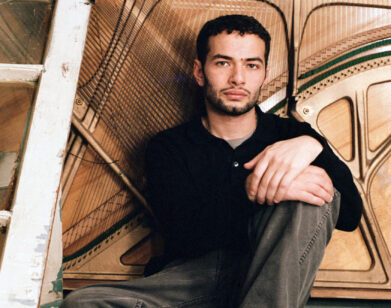Venice Underdogs

Every two years, countries send their best artists (or adopted artists) to compete for critical attention, national pride, and the prestigious Golden Lion award. The mission statement for each country is to find an artist or group of artists to represent its national identity. But the most productive pavilions are often the ones that address cross-cultural concerns and the complex relationships between countries. This year, the biggest pre-event buzz is for Liam Gillick at the German Pavilion, Bruce Nauman representing the United States, Steve McQueen for the UK, and Elmgreen and Dragsets’ cheeky contributions to the Nordic and Danish Pavilions. As in the Olympics, it’s the smaller coutnries with the funky flag colors that make for the best surprises. Here are five pavilions that might lack pregame hype:
The Outback is a vast field to explore, and Shaun Gladwell’s MADDESTMAXIMVS for the Australian Pavilion in the Giardini will amplify the wild wonders of Australia’s untamed landscape. Gladwell’s suite of five inter-connected videos with sculptural and photographic components are inspired by Mad Max and Gladwell’s own experiences travelling the rough lands central to Australian identity.
Ragnar Kjartansson’s offering, “Sorrow Conquers Happiness,” is hardly joyless. The youngest artist to ever represent Iceland, Kjartansson will transform the Icelandic pavilion into a painting studio where the he will produce a stream of paintings of a male model from life. The model will pose while a video and sound installation shows the melancholy artist and regional rock star scaling the Canadian Rocky Mountains like Caspar David Friedrich or Bas Jan Ader is screened in the background.
After establishing her artistic identity as a permanent outsider, Fiona Tan is losing herself in the Dutch pavilion. Tan’s previous videos and photographic projects portrayed her search for her own identity as a person raised internationally, and showed a fine understanding of how we present ourselves to others when our sense of self is unattached to a cultural framework. In “Disorient,” Tan’s new video installation for Venice, she turns her attention toward her surroundings to ask: what is Venice’s personality? And how do people relate to the city?
For its second year at Venice, Mexico will be represented by “¿De qué otra cosa podríamos hablar? (What Else Could We Talk About?),” Teresa Margolles’s nightmare chronicles of Western exploitation of impoverished Latin America and the grisly toll of the drug war on Mexico’s poor. Death ultimately comes for everybody. Margolles’ morbid minimalism, which in the past has included water used to wash corpses in a visually stark installation and a concrete block made from cement mixed with the ashes of a cremated baby, argues that inequality determines the nature of death and life for most of the world’s people.
“East-West Divan: Contemporary Art from Afghanistan, Pakistan and Iran” is organized by Turquoise Mountain, an institute devoted to promoting and preserving traditional Afghan culture. But here, the work in the pavilion is selected to challenge ideas about cultural traditions and upset the notion that these three contentious countries are fundamentally resistant to modernity. Alongside works that disrupte stereotypes about the region is British artist Shezad Dawood’s neon “Triple Negation Chandelier.” “My chandelier takes the principal assertion of the Islamic faith, ‘There is no God, but God’,” Dawood explains, “and uses it to highlight what I see as a direct correlation between early Islamic philosophy, and various idea of formlessness, negation and syntax that only come into play much later in the West. The work then, for me becomes a way of looking at how everything comes full-circle; even the project of the ‘modern’ is as old as the hills.”






